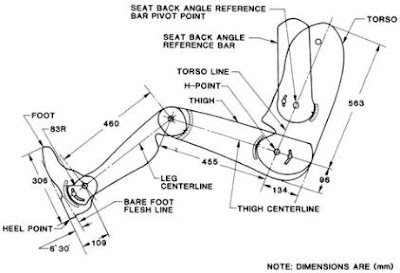Automotive Ergonomics Brian Peacock Pdf Download
.jpg)
Oct 10, 2008 - ters), and promoting human factors/ergonomics and informing others about what. Automotive industry nationally and internationally. Receiving the. School of Construction, Virginia Tech; and John Brian Peacock, professor. Apr 16, 2010 - Automotive ergonomics by, 1993, Taylor & Francis edition, in English. Cover of: Automotive ergonomics edited by Brian Peacock.
Six Perspectives Different industries and government agencies approach human factors from different perspectives. In fields like medicine and aviation, where mistakes can have major consequences, safety is a primary reason for incorporating human factors. In highly competitive industries like communications and computer technology, corporate leaders prize innovations that will yield an edge in the marketplace. Large manufacturers, such as automotive companies, want to know how to save steps and reduce production costs.
The military wants to know how to effectively train large numbers of people to operate complex equipment. Scientists, engineers, and others who are working on effectively integrating human factors in their organizations must understand and respond to different interests. One way to better understand diverse industry needs is to study real examples from enterprises in which human factors experts have successfully integrated their work. To highlight what works and what doesn't in various industries, the Committee on Human Factors asked executives from six fields—aviation, computer and communications technology, the automobile industry, electronics, insurance, and military research and development—to discuss their experiences in effectively articulating the value of human factors. Although some challenges are similar across industries (such as managers who prefer not to bother with human factors until a serious accident occurs), the speakers had unique perspectives that illustrated the diverse situations that human factors experts face.
The following sections summarize the speakers' presentations. Changing the Culture of Safety: the Aviation Industry John Lauber Vice President for Safety and Compliance, Delta Air Lines John Lauber approached human factor first as a researcher for the Navy and the National Aeronautics and Space Administration, then as a member of the National Transportation Safety Board, and now as an airline executive. From these diverse vantage points he has learned how to change the culture of the aviation industry. Since a large proportion of airline accidents involve human performance issues, safety is a primary driving force for human factors in aviation. But this does not mean that human factors advocates have automatic entry to the industry: they still must be able to demonstrate how investing in human factors research and development is a rational strategy for solving safety problems. Avg 8 free download full version. This often requires changing certain aspects of the industry culture. We had to convince the airline community—the operational community—that a group of NASA scientists and psychologists could tell a crusty old master of ocean crossings from Pan Am that we could actually make a contribution to the safe operation of aircraft.

That was no mean task. John Lauber For example, human factors professionals at the National Transportation Safety Board realized several years ago that to integrate human factors into their work, they would require changing some conventional ideas about accidents and human performance. In the past, the board's investigations focused on determining who or what was to blame for an accident or error.